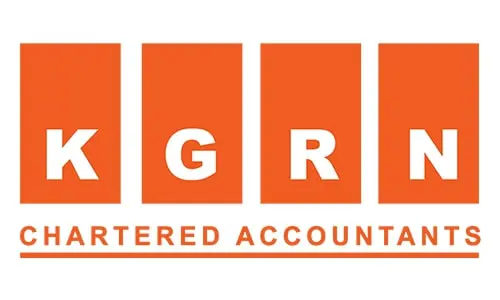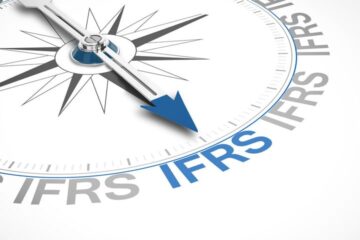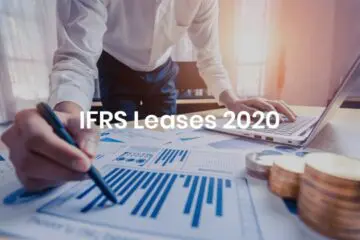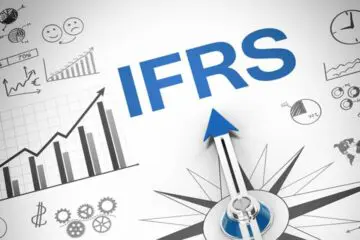IFRS leases
As per new rules, the UAE is all set to implement IFRS leases on a national scale. These new IFRS leases and subleases came into force and have since revolutionized the UAE. The primary objective behind such an implementation was to record the rent agreement formally. Such IFRS leases led to the recording of rental contracts as a determined sheet of the residents, thereby removing working leases.
As a result, homeowners need to be aware of the IFRS 16 sublease, and its function. In this article, we will take a look at sublease accounting guidelines for the IFRS 16 sublease.
Impact on Emirati Housing
All these new additions to the law will have a significant impact on Emirati housing. Experts state that they will give rise to considerable changes in the accounting and bookkeeping functions of tenants. Hence, more and more such owners will need to make use of accounting services in Dubai. It will also help in expanding the benefits and liabilities of homeowners, and help protect the best interests of both parties. Sublease accounting IFRS guidelines help homeowners navigate through their tenancy efficiently.
Also, short-term leases which last under a year and leases of low-esteem resources do not come under the prerequisites of IFRS 16. Hence, homeowners must consult experts to clear all their doubts on IFRS 16 sublease accounting entries. This will help ensure they meet all the compliance requirements and file their reports on time.
New IFRS standards 2020: For enquiries call: +971 45 570 204 / Email Us: [email protected]
Main changes to the system
IFRS leases help give access to resources without necessary forthright expenses. It enables clients to include such rented resources in their financial reports alongside the related risk. Without doing so, clients cannot leverage the advantages that the substance provides. Also, not doing so does not allow clients to contrast their financial situation with other elements effectively. This also makes it difficult for clients to decide whether to purchase the benefit or choose elective financing plans.
IAS 17 Leases
IAS 17 leases, the forerunner to IFRS 16 sublease, expects substances to order their agreements as either working leases or account leases. This aligns them with the degree of risks and prizes associated with owning or leasing the rented resource. Hence, all such risks and rewards lie with the lessor or the resident. IFRS leases also evacuate the ‘working’ and ‘financial’ rent qualifications for residents. Instead, it replaces them with the idea of ‘right-of-utilization’ of resources and financial liabilities.
Proof of a lease contract
IFRS 16 sublease accounting entries to a great extent means the rent given in IAS 17. However, the directive that enables such a definition has now changed. This implies that conceivably more agreements will be brought into the extent of the new standard. Hence, a few deals which come under IAS 17 might be investigated as a result.
The legality of the agreement and rent presently depends substantially on the topic regarding controls over the utilization of the leading resource for a particular period. It isn’t adequate that a client has an option to use any one of the advantages arising from the utilization of a benefit. Instead, the client should likewise be able to coordinate the utilization of the service.
Hence, clients must update themselves on laws regarding IFRS 16 sublease accounting entries. This will help them comply with the new rules and maintain the correct records.
New IFRS standards 2020: For enquiries call: +971 45 570 204 / Email Us: [email protected]
What should be recognized at the commencement date?
At the beginning date, which is when a lessor makes the essential resource accessible for use by a resident, you have to perceive:
- A rent obligation for the present estimation of future rent instalments over the rent term that is monetarily unavoidable (‘rent risk’)
- A right-of-utilization resource at a cost
- Case of initial measurement of the lease liability
- A right-of-use of asset
–
For instance, imagine a renter goes into a 5-year rent on a structure. To get the rent, the lessee brings about beginning expenses of Cu 30,000. Cu 20,000 identifies with an instalment made to a previous inhabitant possessing the property. The rest of the Cu 10,000 is paid to the home specialist for organizing the rent. The agreement sets out a base rent term of 5 years which may expand to a further five years. In such cases, the instalment plan is as follows:
- First 5 years – CU50,000 for every annum ahead of time
- Optional 5-year time span – CU55,000 for every annum ahead of time
In the beginning, the lessee infers that it isn’t sensible to provide the choice to expand the rent. Hence, along these lines, he or she discovers that the rent term is five years. The loan cost understood in the rent isn’t promptly definable. In any case, lessee’s steady acquiring rate is 5% per annum. This mirrors the fixed rate that lessee would pay, for a sum identical to the estimation of the right-of-utilization resource, for a 5-year term with a comparative guarantee.
At the beginning date, the lessee gets CU 5,000 of rent impetuses from the lessor. The underlying expenses of CU 30,000 get added to the payment of the right-of-utilization resource. This happens because the costs acquired are initial direct costs, characterized as “the steady expenses of getting a rent that would not have been brought about if the rent had not been gotten”.
Stage 1:
Determine the rent risk at the beginning date by deciding the present estimation of the staying least rent instalments, limited at a loan fee of 5%.
Stage 2:
Determine the right-of-utilization resource at the beginning date.
Resident at first perceives resources and liabilities in connection to the rent as pursues:
- Ensuring measurement and disclosure
- Right-of-use asset
The right-of-utilization resource helps in utilizing either the cost or reasonable worth model. If an element chooses the cost model, at that point, the right-of-utilization resource becomes at a price less than any amassed deterioration and gathers impedance misfortunes.
Suppose the right-of-utilization resource identifies with a class of property, plant, and hardware to which the revaluation model applies. In that case, an element may apply the revaluation model to the entirety of the right-of-utilization resources that identify with the specific class. A part may have a reasonable incentive through benefit and misfortune. Bookkeeping approach for its speculation properties must also gauge any right-of-utilization resource. Such a resource meets the meaning of a venture property at a reasonable worth.
New IFRS standards 2020: For enquiries call: +971 45 570 204 / Email Us: [email protected]
Change provisions
These two change models apply reliably to all leases.
Full transition method
Under the full change strategy, IAS 8 applications occur in total. That implies that the financial situation toward the start of the comparable period repeats itself. This mirrors the conveying estimation of right-of-utilization resources and budgetary liabilities. Hence, these occur as though IFRS leases apply from the beginning of each rent.
Aggregate catch up approach
Under the aggregate get up to speed approach, the underlying application date resolves on the primary day of the budgetary period in which IFRS leases apply. This implies displaying the comparing sums having used IAS 17. While this strategy might be simpler to apply, the earlier period financial position and results won’t be similar to the introduction and part introduced for the present time frame. Consequently, substances must uncover the impact of applying this methodology, including:
- clarification of any contrast between the working lease responsibilities uncovered
- rent liabilities perceived on introductory utilization of IFRS 16 outsource accounting in Dubai
The weighted regular steady obtaining rate applies to rent liabilities perceived at the date of the application. Under this methodology, there is likewise the alternative of using some extra down to earth catalysts. For example;
- Portfolio rebate rate to use a solitary markdown rate to an arrangement of leases with comparative qualities
- Leases under a year is a short-term working lease under IAS 17
New IFRS standards 2020: For enquiries call: +971 45 570 204 / Email Us: [email protected]
New disclosure requirements
The target of the exposure prerequisites in IFRS leases is for tenants to give data that will help clients survey the impact that leases have on the financial position, execution, and incomes of the business. The disclosure requirements aim for the disclosure of the following elements;
By the class of essential resource:
- Depreciation cost
- Carrying estimation of right-of-utilization resources
- Additions to right-of-utilization resources
- Interest cost on rent liabilities
Other costs identifying with:
- Short-term leases with down to earth practical (need exclude leases with a rent term of one month or less);
- Leases of low-esteem resources
- Variable rent instalments excluded from the rent risk.
- Accounting arrangement for momentary rents and low worth resources with exclusions
- Sub-letting pay from right-of-utilization resources
- The total financial outpouring for leases
- Gains and misfortunes marked down and rent back exchanges
- Costs that the tenant has remembered for the conveying measure of another advantage
In what manner can KGRN help assess the effect of the new standard on your key execution markers?
- KGRN can help you comprehend the effect of execution on your budget reports and your business.
- Develop a performance intended to guarantee smooth and savvy change and undertaking to deal with the usage procedure.
- Establish a proper business procedure and arrangement of interior command over representing leases.
- Assess the effect of any adjustments to the rent terms and how they will be described.
Hence, we can support businesses with all their sublease accounting needs.
New IFRS standards 2020: For enquiries call: +971 45 570 204 / Email Us: [email protected]
Related Posts
How to get audit license in Dubai
Our Services
Audit firms in Dubai
Audit services in Dubai
Accounting firms in Dubai
Accounting services in Dubai
Bookkeeping services Dubai
ICV certificate
Tag: advisory service provider, advisory services in banking, advisory services analyst, advisory services accounting, a financial advisory service, investment advisory services, advisory services consultant, advisory services company, advisory service centre, advisory service firms







